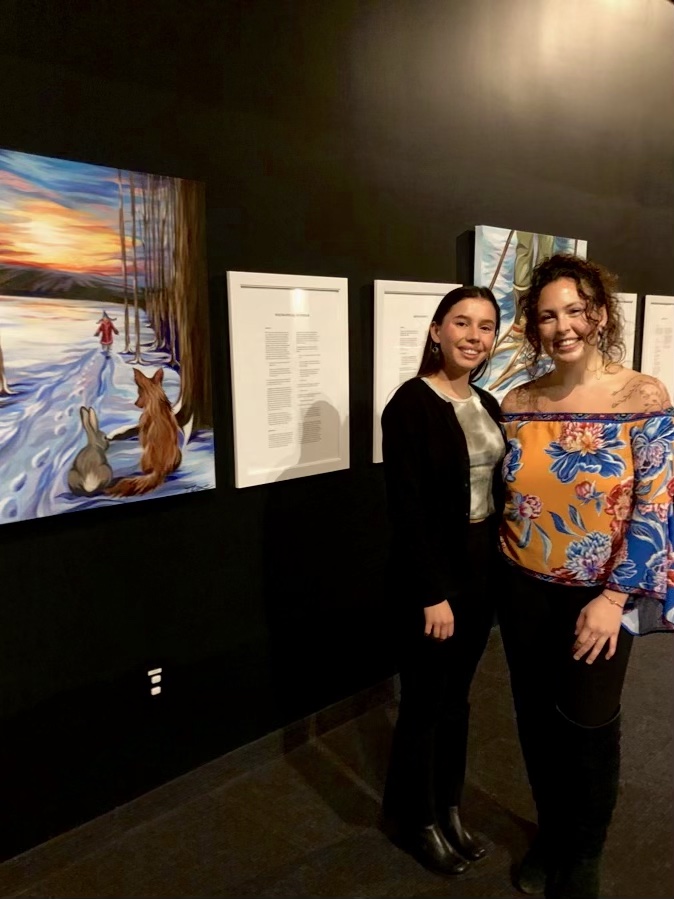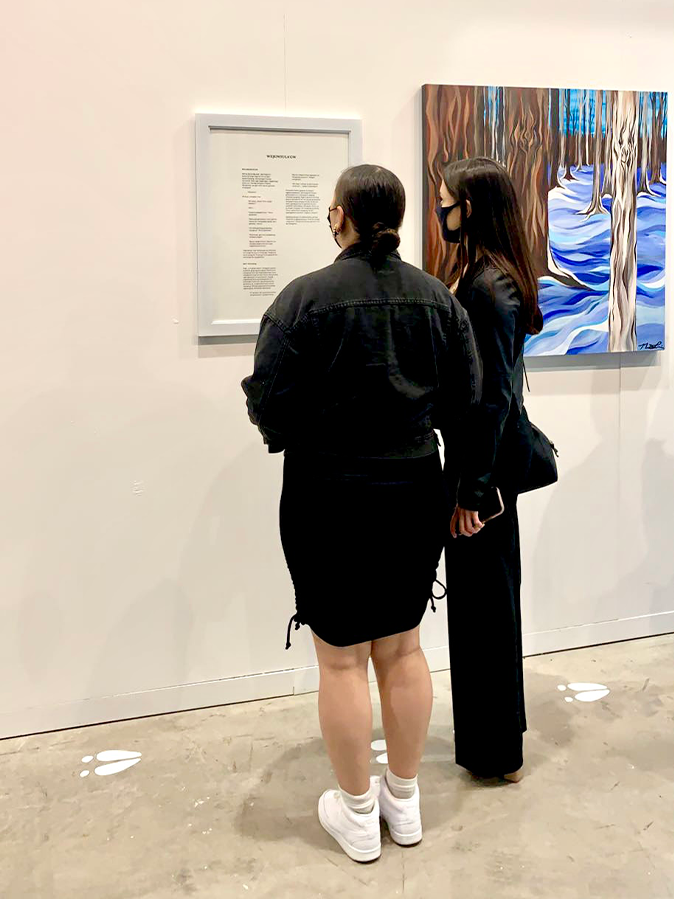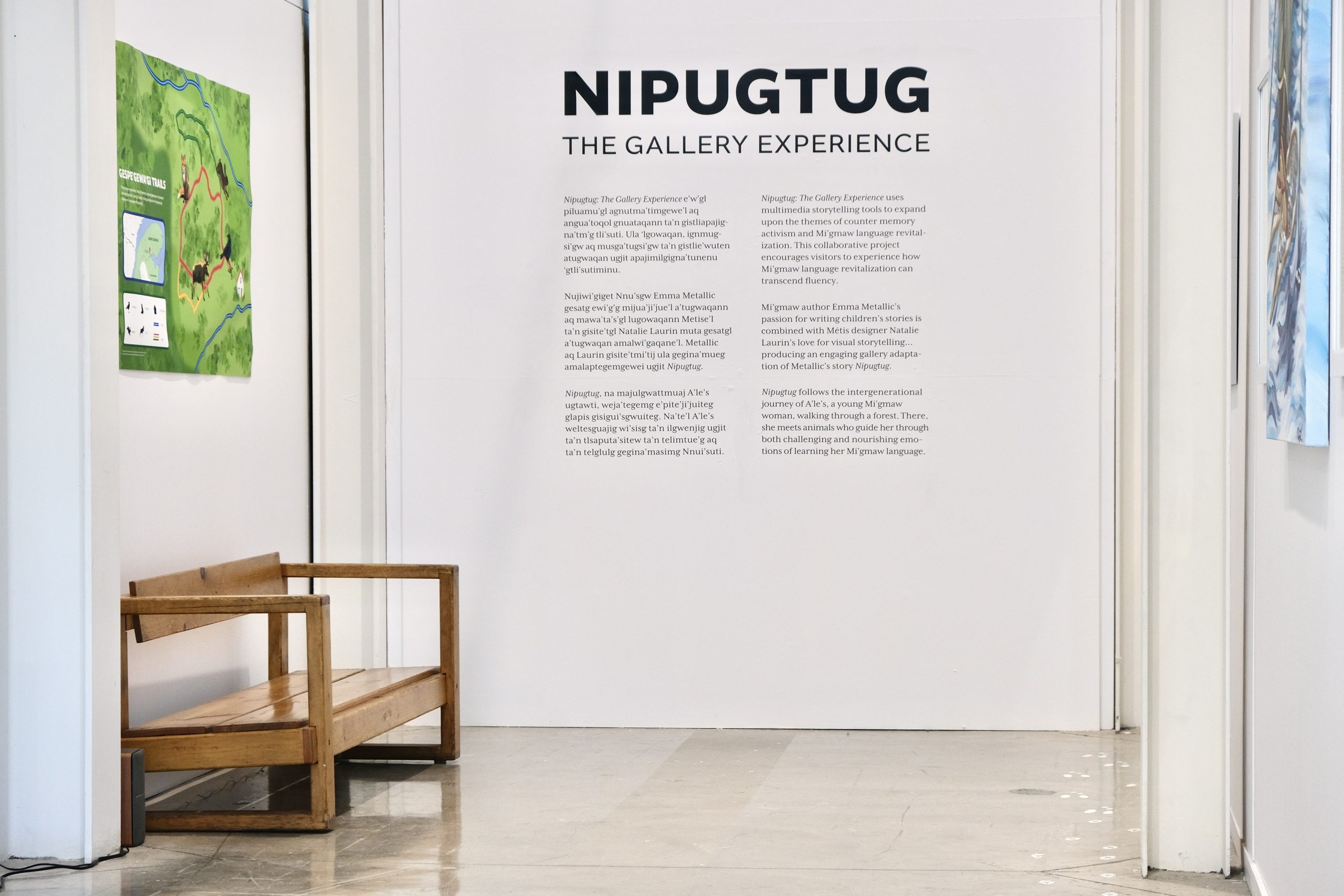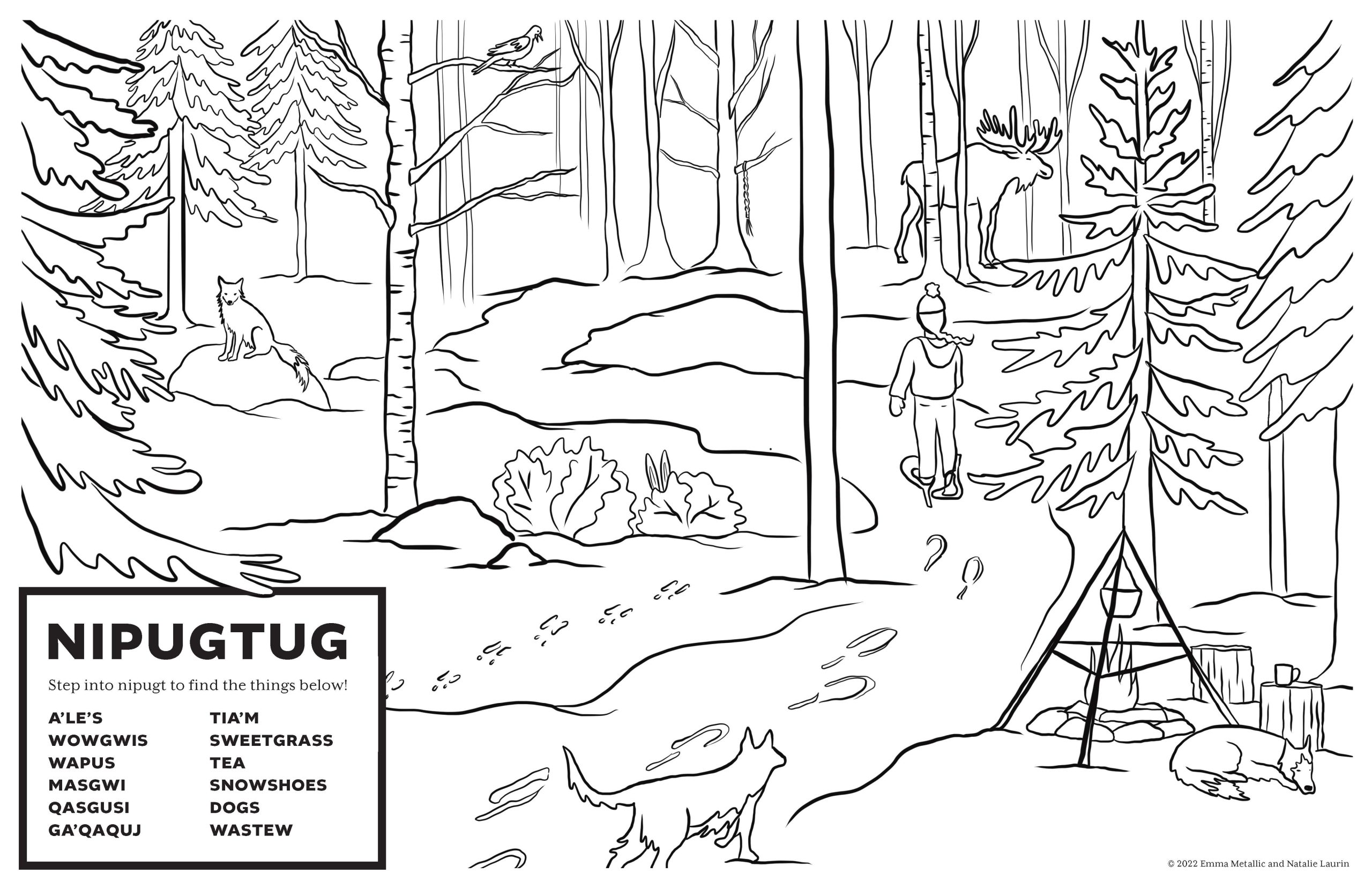In 2022, Natalie Laurin (BDes 2022) collaborated with Emma Metallic to create Nipugtug: The Gallery Experience, a multimedia adaptation of Metallic’s written story that aims to revitalize the Mi’gmaw language.
Laurin, a Métis and settler illustrator, holds a Bachelor of Design in Interdisciplinary Design with a Minor in Illustration from NSCAD. She is also currently the Exhibitions Coordinator for the Treaty Space Gallery Works on Campus and Public Art at NSCAD. Metallic, a Mi’gmaw author, holds a Bachelor of Arts Combined Honours in Law, Justice, & Society with Contemporary Studies and a Minor in Indigenous Studies from the University of King’s College.


Their collaboration began when Laurin was in her final studio course for the Interdisciplinary Design program, called Design Studio 6. Students in the course were tasked with creating a project in response to one of the United Nations Sustainable Development Goals. Identifying Indigenous language loss as an area of focus, Laurin reached out to Metallic with a proposal to collaborate and utilize the Treaty Space Gallery.
Nipugtug is about a young Mi’gmaw woman, walking through a forest, where she encounters animals who help guide her while learning the Mi’kmaw language. Nipugtug means “in the forest” in Mi’gmaw.
The book is written in both English and Mi’gmaw. Within the installation, English can be seen on the right side of each painting and Mi’gmaw on the left.
“The target audience is other Mi’gmaw people, especially young Mi’gmaw people reading their stories and becoming passionate about it,” Laurin says, “and there is a secondary component of educating the public.”
“An interesting aspect of the English translation is that it is not completely English, some words are in Mi’gmaw and people have to figure it out and get a taste of the language. The Mi’gmaw language is so descriptive, a single word can describe so much and about a thing or an action and English simply does not do that.”
Laurin described her process for creating the illustrations stating that: “Emma’s writing is so beautiful that images just jumped out to me while I was reading. So many scenes were so clear in my head of how they could be painted or drawn and depicted as an image. Together we worked and found parts of the story that would create the most distinct imagery.”
“It was really interesting witnessing the collaboration between Emma and her dad. They worked together on translating the story to Mi’gmaw. He would speak and she wrote it down. Other elders in the community who are fluent helped.”
When it came time to exhibit their work, they decided to incorporate a multimedia storytelling approach. In the first exhibition at the NSCAD Treaty Space Gallery there was an audio component. A soundscape of snowshoes crunching on the snow, moose calls, the sound of water, and Metallic’s voice reading the story in Mi’gmaw played over the speakers.

Seeing and hearing it helps people understand better. This immersion into the language, even if they have no initial experience with it, helps people to comprehend the language.”
Not only did the soundscape add atmosphere to the exhibition, but Metallic’s narration also served to mitigate the orthographies, having the audio bridge the gap for people who understand different dialects of Mi’gmaw. Since Mi’gmaw is originally an oral language, there are different orthographies, or ways of spelling, in different regions.
At the exhibition tea was served to further immerse the audience. Vinyl footprints ran along the floor, changing as different animals were introduced in the story. Laurin remarked how children would jump from one footprint to the next, as they engaged with the story in this manner.

In a second exhibition at the Halifax Museum of Natural History as part of Apoqnmatm curated by Kayla Rudderham, the map was too big for the wall space available, so Laurin and Metallic developed a colouring page for children to take home. It was another way of involving and engaging young children in learning.
When asked what Laurin sees for the future of Nipugtug and how this experience will inform her future work she said: “We definitely want to keep collaborating on this. I think both of us are really pleased with how each of our talents created something beautiful. We have an idea for a series of these books made into a teaching tool with a version for very beginners that was mainly written in English with a few Mi’gmaw words interspersed, and then maybe a second intermediate version mostly written in Mi’gmaw and then a final version that’s written completely in Mi’gmaw.”
A published version of Nipugtug will be available this winter through Kegedonce Press.
